Abstract
Kidney histology of five infants who died during or immediately after treatment with adrenocorticotrophic hormone (ACTH) showed severe tubular and interstitial calcinosis. We therefore studied serum concentrations of calcium, inorganic phosphate, and parathormone, serum activities of alkaline phosphatase, and urinary excretion of calcium, inorganic phosphate, and cyclic adenosine monophosphate (cAMP) in 16 other children with infantile spasms before, during, and after 6 weeks of treatment with ACTH. During the treatment the following observations were made: hypocalcaemia developed in three infants; the mean daily urinary excretion of calcium in the group increased threefold and seven infants had hypercalciuria; the excretion of phosphate increased but its tubular reabsorption remained stable; and in most infants serum parathormone and urinary cAMP excretion increased, and in four infants they increased to supranormal concentrations. These biochemical changes were reversible in most infants. Radiographs suggested loss of bone mass by 3-4 weeks of treatment, with rapid recovery after treatment. We conclude that infants treated with ACTH for infantile spasms are at risk of suffering disturbance in calcium and phosphate homeostasis, which leads to nephrocalcinosis.
Full text
PDF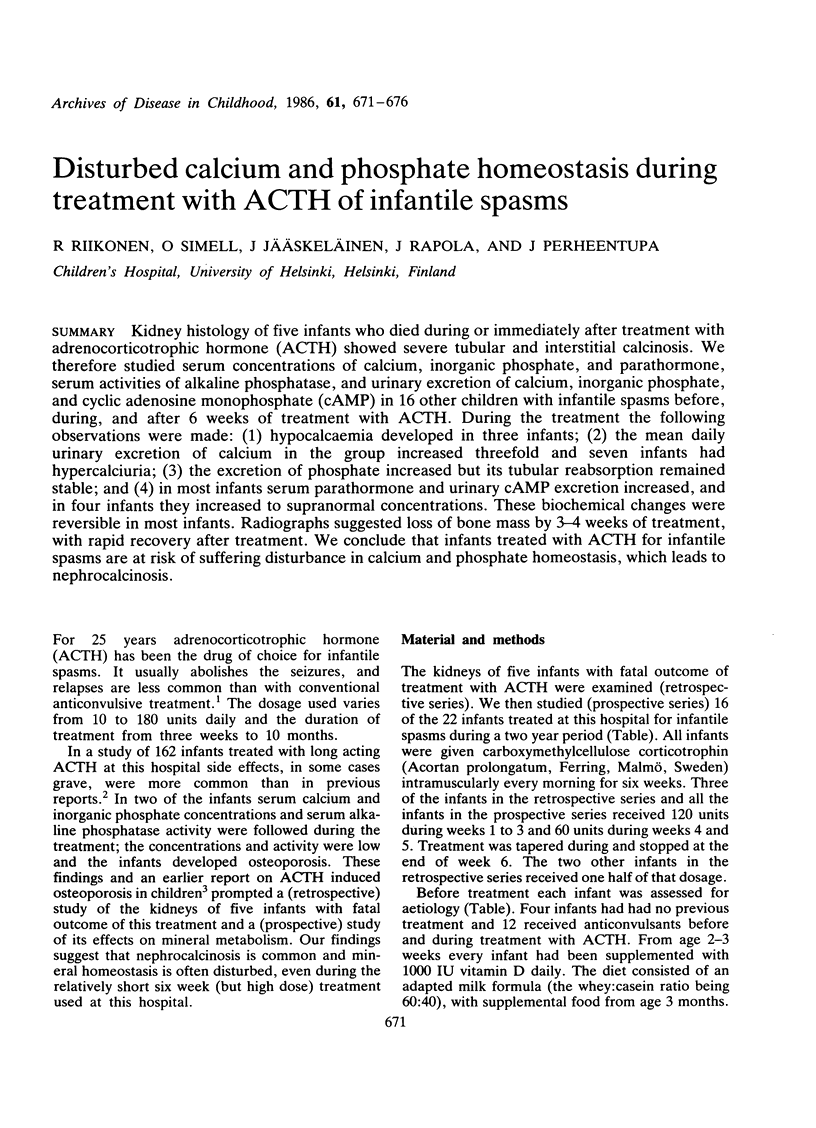
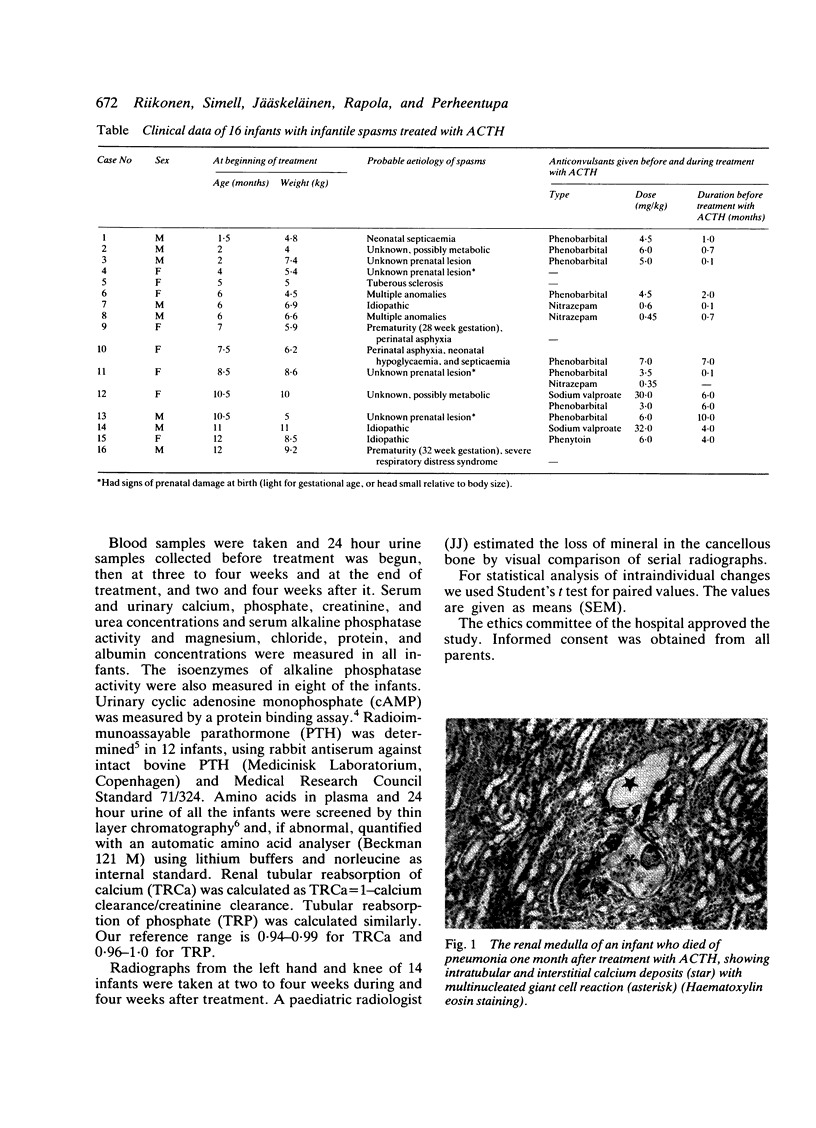
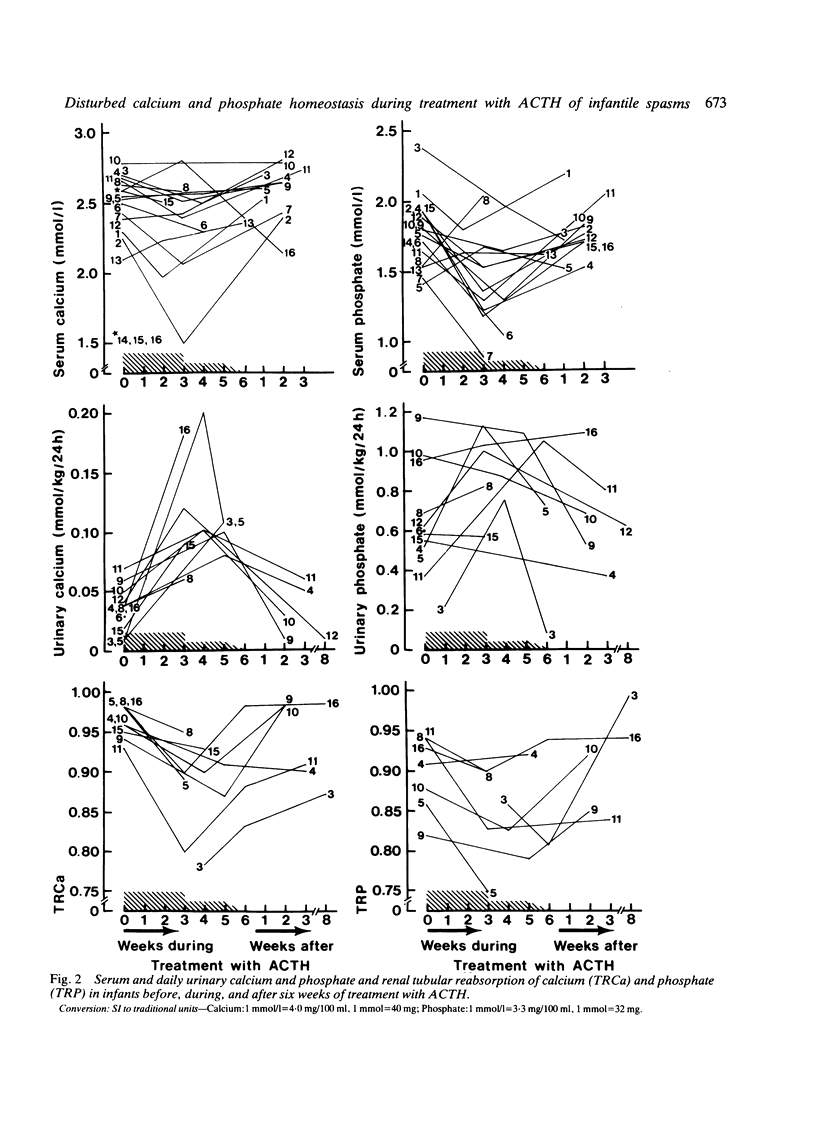
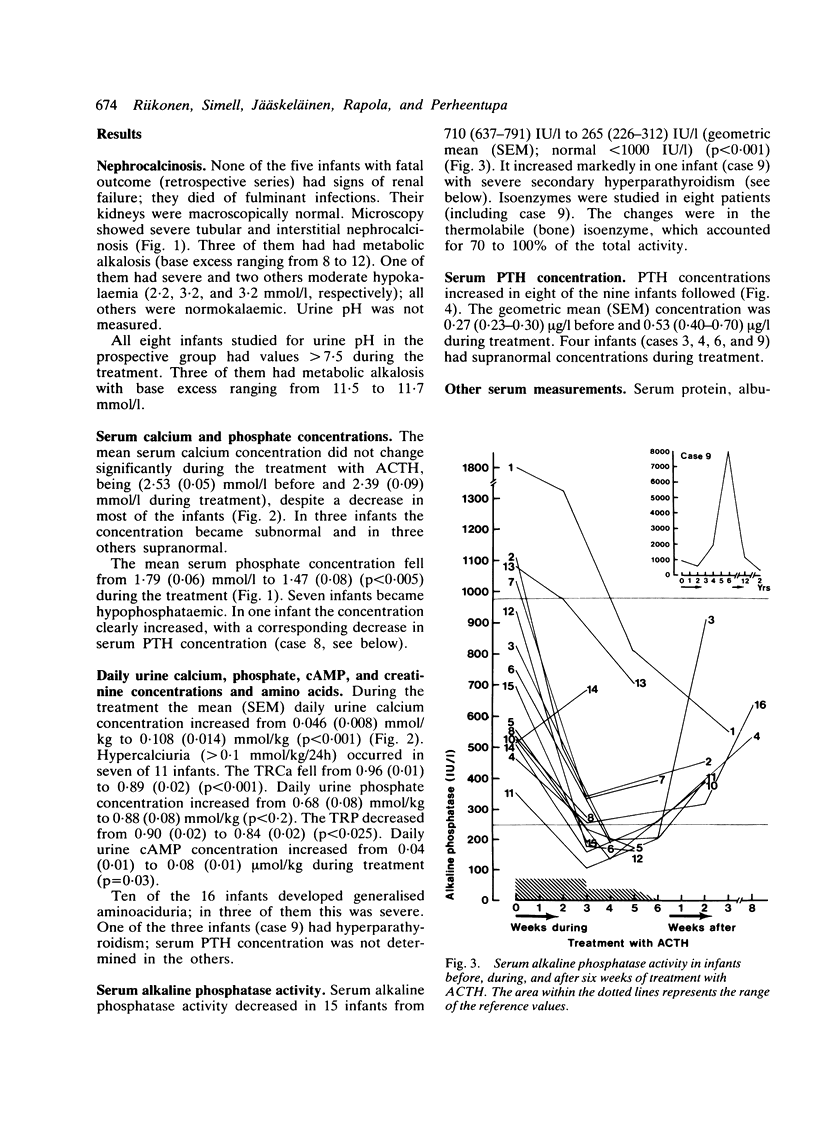
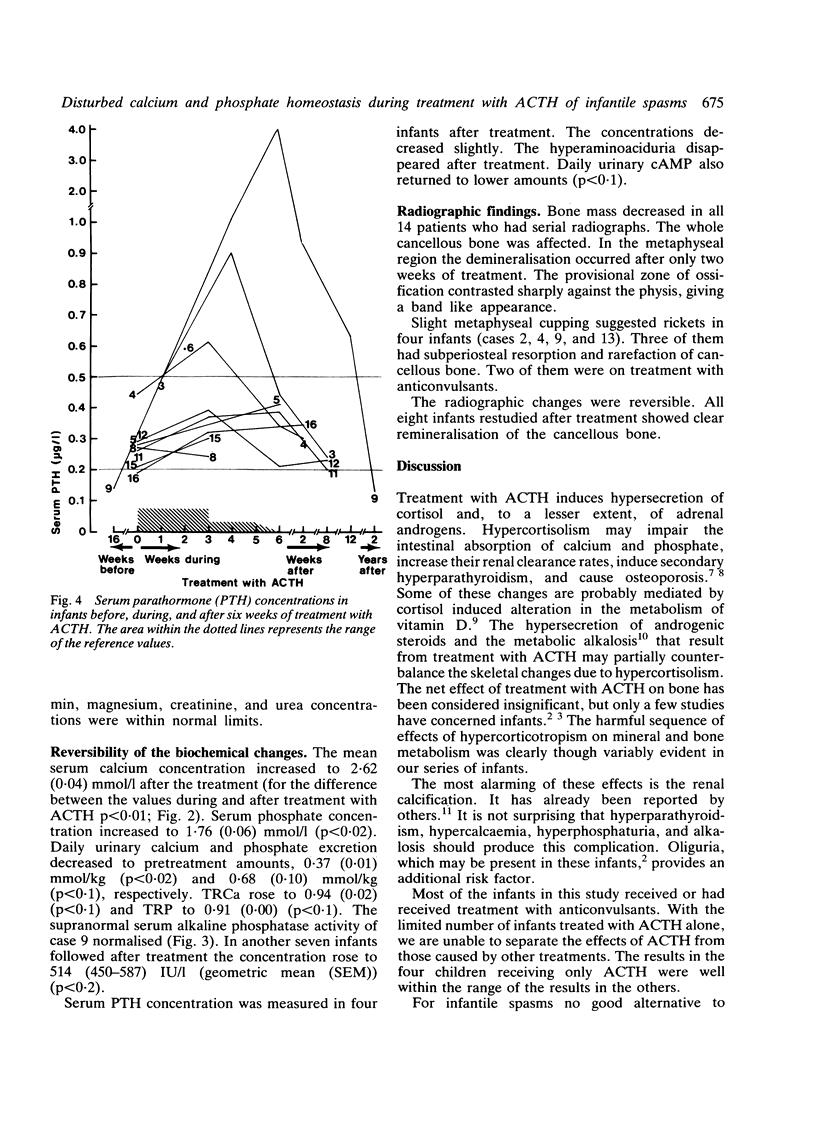
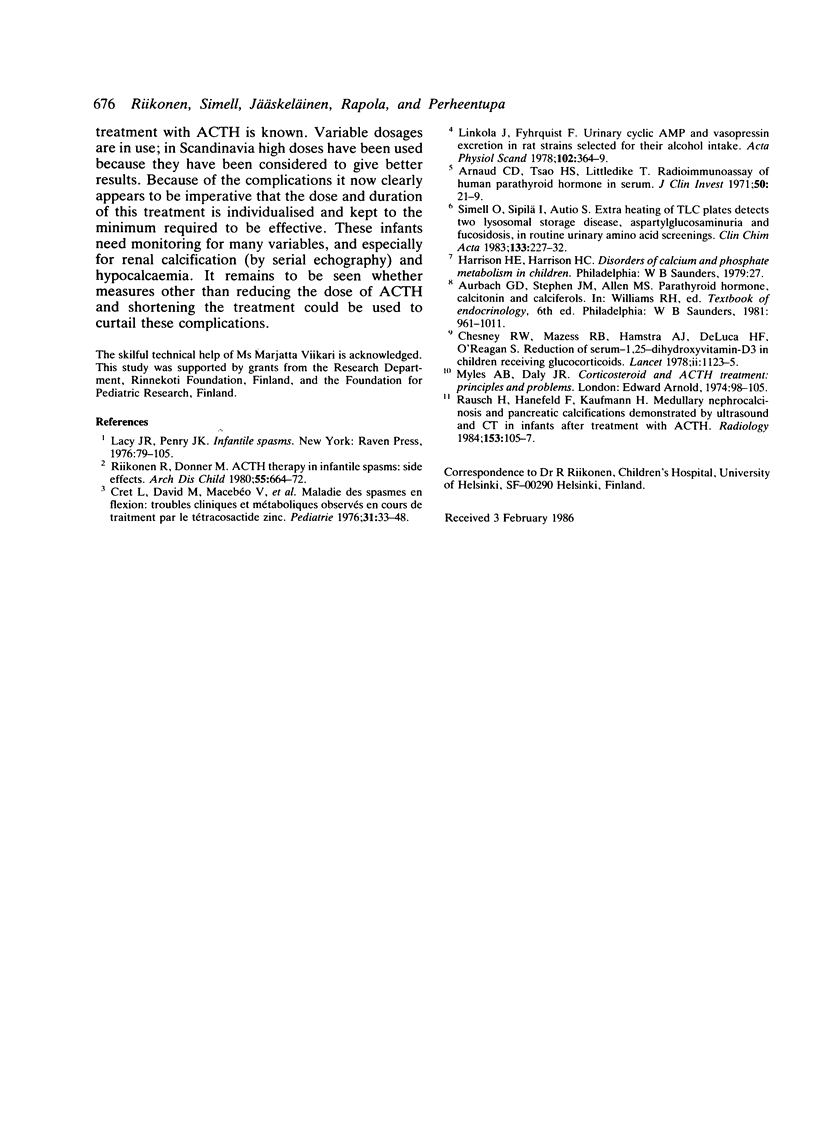
Images in this article
Selected References
These references are in PubMed. This may not be the complete list of references from this article.
- Arnaud C. D., Tsao H. S., Littledike T. Radioimmunoassay of human parathyroid hormone in serum. J Clin Invest. 1971 Jan;50(1):21–34. doi: 10.1172/JCI106476. [DOI] [PMC free article] [PubMed] [Google Scholar]
- Chesney R. W., Mazess R. B., Hamstra A. J., DeLuca H. F., O'Reagan S. Reduction of serum-1, 25-dihydroxyvitamin-D3 in children receiving glucocorticoids. Lancet. 1978 Nov 25;2(8100):1123–1125. doi: 10.1016/s0140-6736(78)92277-8. [DOI] [PubMed] [Google Scholar]
- Cret L., David M., Macabéo V., Frédérich A., Jeune M. Maladie des spasmes en flexion: troubles cliniques et métaboliques observés en cours de traitement par le tétracosactide zinc. Pediatrie. 1976 Jan-Feb;31(1):33–48. [PubMed] [Google Scholar]
- Linkola J., Fyhrquist F. Urinary cyclic AMP and vasopressin excretion in rat strains selected for their alcohol intake. Acta Physiol Scand. 1978 Mar;102(3):364–367. doi: 10.1111/j.1748-1716.1978.tb06083.x. [DOI] [PubMed] [Google Scholar]
- Rausch H. P., Hanefeld F., Kaufmann H. J. Medullary nephrocalcinosis and pancreatic calcifications demonstrated by ultrasound and CT in infants after treatment with ACTH. Radiology. 1984 Oct;153(1):105–107. doi: 10.1148/radiology.153.1.6089261. [DOI] [PubMed] [Google Scholar]
- Riikonen R., Donner M. ACTH therapy in infantile spasms: side effects. Arch Dis Child. 1980 Sep;55(9):664–672. doi: 10.1136/adc.55.9.664. [DOI] [PMC free article] [PubMed] [Google Scholar]
- Simell O., Sipilä I., Autio S. Extra heating of TLC plates detects two lysosomal storage diseases, aspartylglucosaminuria and fucosidosis, during routine urinary amino acid screening. Clin Chim Acta. 1983 Sep 30;133(2):227–232. doi: 10.1016/0009-8981(83)90409-6. [DOI] [PubMed] [Google Scholar]



